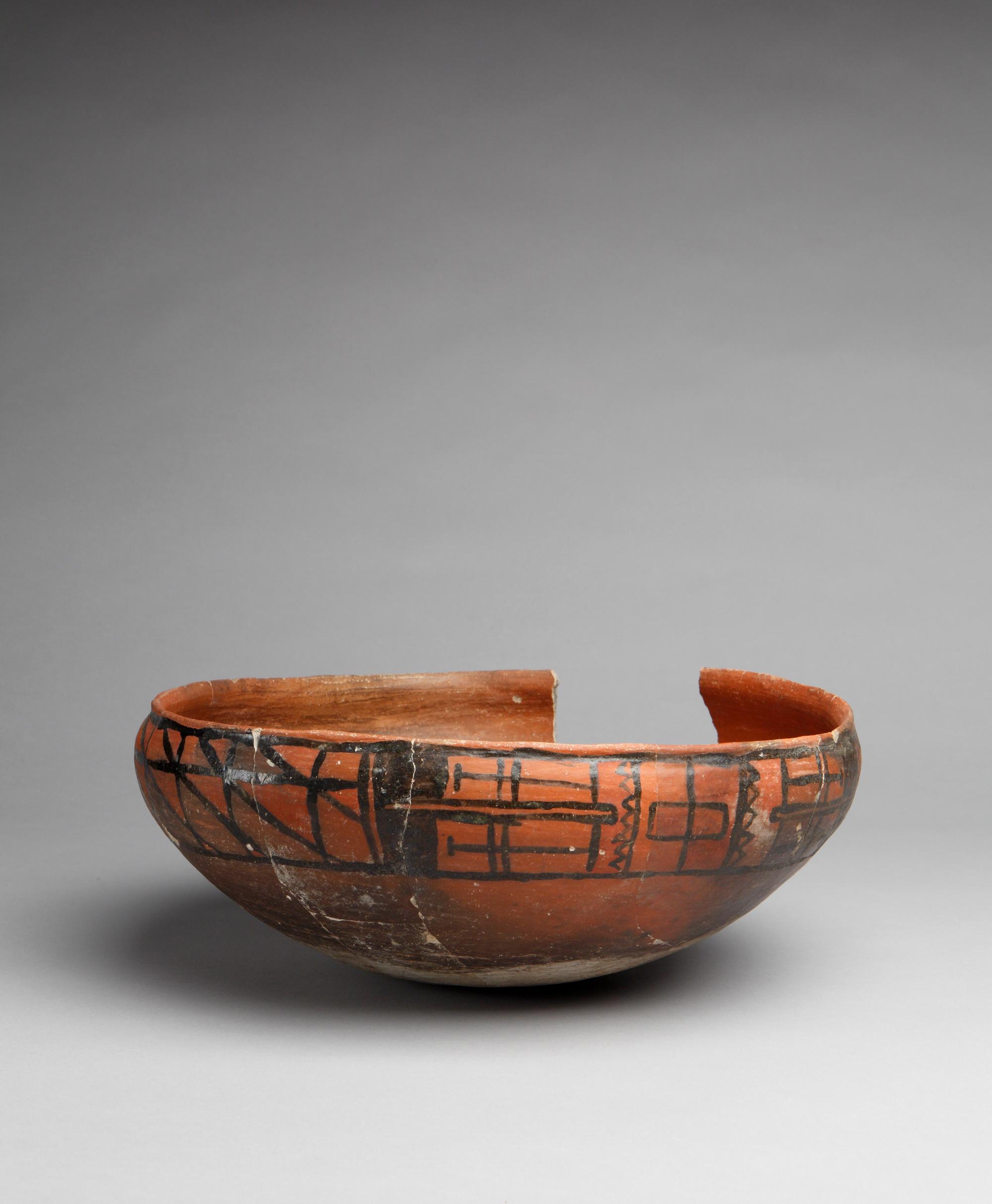
Photograph by Addison Doty. Copyright 2015 School for Advanced Research.
Bowl
Date: c. 1680
Artist or Maker: Unknown
Dimensions:
Dimensions: 12.8 × 34.3 cm (5 1/16 × 13 1/2 in.)
Weight: 1.3 kg (2.85 lb.)
Medium: clay | paints
Credit Line: Bequest of James Richard (Rick) Dillingham, II; received at IARC in 1994.
Place Made:
Valencia County, New Mexico, Southwest, United States, North America
Object Number: SAR.1994-4-590
Not on view
Tribal Collection Review RemarksJim Enote and Octavius Seowtewa during collection review visit ?, 2014 (Events Record “Collection Review: Zuni Tribe, Review ?”): This is a stew bowl form, black-on-red decoration, glaze paint. It was broken and glued back together, though a large piece is still missing. It was likely found in pieces. The piece does not appear to have been “killed,” ritually broken for use in a burial. Rather, it was probably broken during use or while being stored. There is not much wear on the rim, nor on the interior. The decoration is only on the exterior, none on the interior. There is a decorative band on the shoulder of the bowl. The motifs include dragonflies (elongated cross-like shape), feathers (triangles), rain, and birds. The designs are Zuni-style designs from this time period. Some of the coils are visible on the bottom. The red slip used on this piece may be made from iron oxide, because it’s a brownish red. Slip made from yellow ochre turns a brighter red when fired. The glaze does look like Hawikuh glaze, though it’s not possible to say for sure without testing.
According to the participants in the Acoma collection review visit June 3-5, 2015 (Events Record “Collection Review: Acoma Pueblo, Review 2”): The temper used for this bowl is pottery sherds. The design, specifically the dragonfly motif, looks to be Zuni. The participants are unsure if it is Acoma but agree it looks very Zuni like.
In Collection(s)
The Indian Arts Research Center, in collaboration with Native American community scholars, strives to present accurate collections records. Records may be updated as new information becomes available and is reviewed with the Native American community having cultural affinity to particular items. Please write to iarc@sarsf.org if you have questions or concerns related to the documentation.
